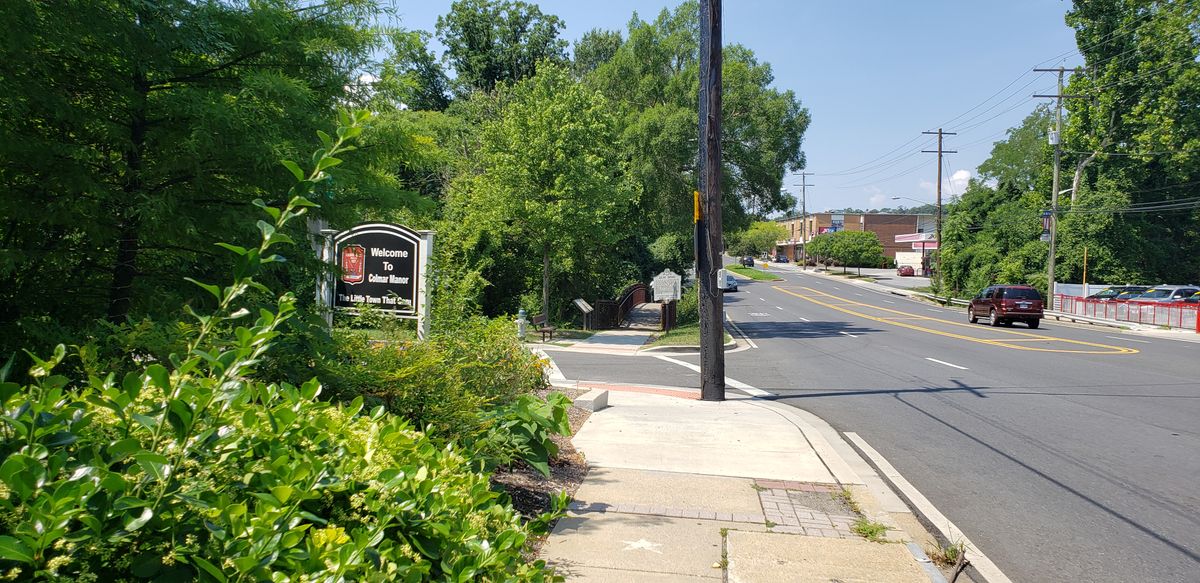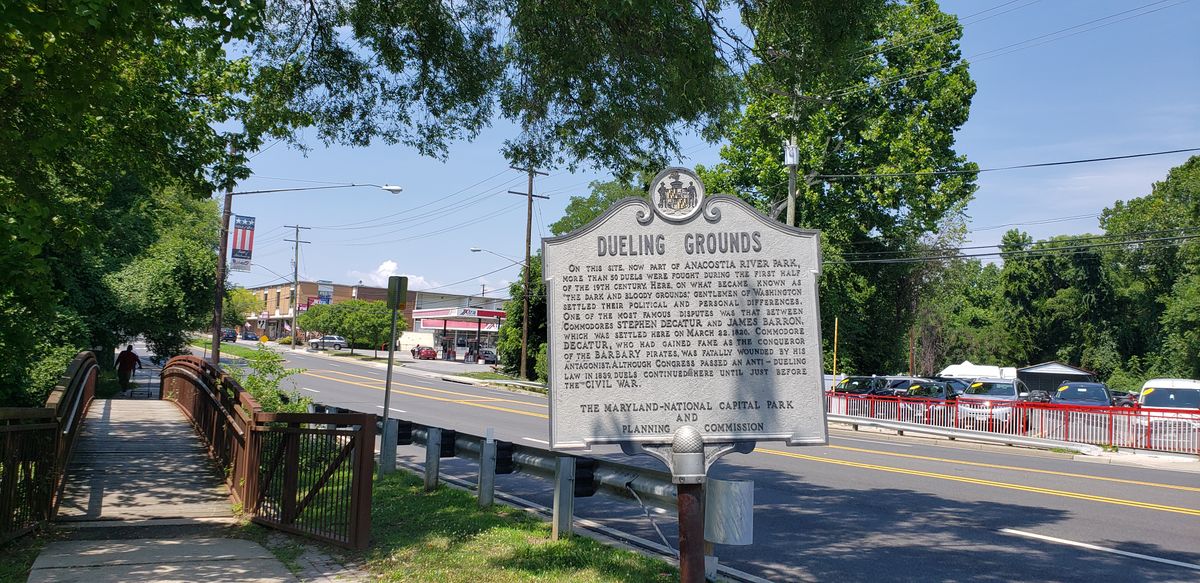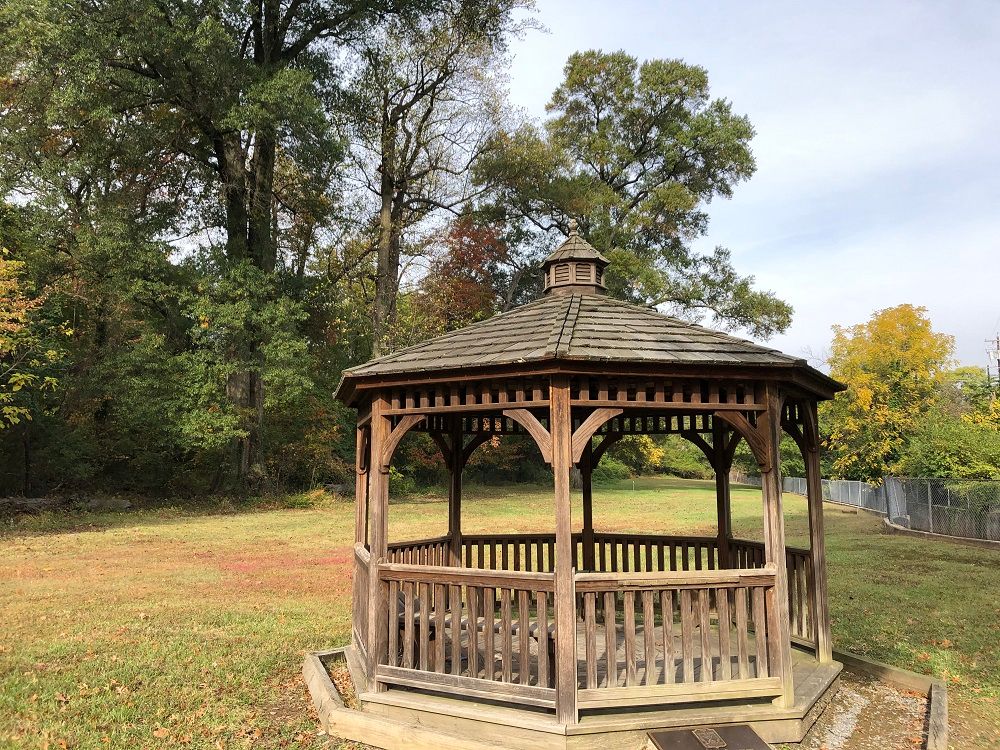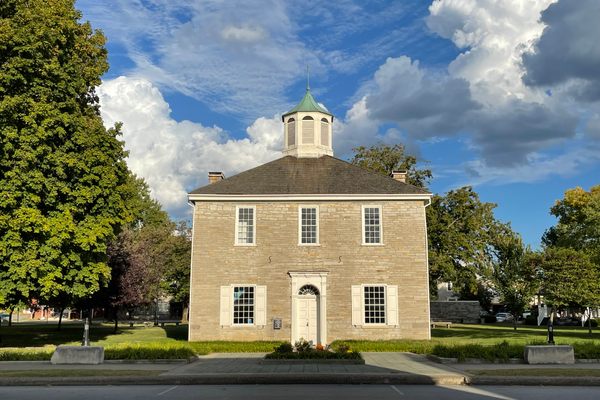About
At a glance, there is nothing especially notable about the patch of grass and scattered trees by a creek in Bladensburg, Maryland, just a few blocks beyond the border with Washington, D.C. But that creek, now reinforced with cement and looking more like a storm drain, was once known as "Blood Run," and the pastoral lawn was the setting of more than 50 political duels during the 1800s.
The Bladensburg dueling grounds became a popular spot for settling feuds during the 19th century (with some accounts stating that duels occurred here as far back as 1732) because despite being less than five miles from the Capitol building, it was technically outside the jurisdiction of Washington police.
Politicians, bureaucrats, and military officers would gather at this park to put an end to their disputes with blood. Congressmen Barent Gardenier and George Campbell dueled over differences of opinion over a trade embargo. Commodores Stephen Decatur and James Barron dueled over testimony in a court martial. Naval cadets Daniel Key and John Sherbourne dueled over a difference of opinion in regard to the speed of steamboats.
In 1839, Congress passed a law prohibiting the challenging or accepting of a duel within the nation's capital after Congressman Jonathan Cilley was shot by fellow Congressman William Graves at Bladensburg over accusations of corruption. Even this didn't put an end to the bloodshed at this place, which writer George Alfred Townsend described as a “cross-roads Sodom.”
Over time, dueling slowly declined in popularity, and the last recorded showdown at the Bladensburg dueling grounds took place in 1868.
Related Tags
Know Before You Go
The dueling grounds are adjacent to 38th avenue, just off of Bladensburg road. There's some parking in a strip mall nearby.
Community Contributors
Added By
Published
January 20, 2017









































